It's great when store shelves are bursting with an abundance of goods. They are full of products with labels that say "Eco", "natural composition" and other enticing things.
The bad news is that some of these products are outright fakes, which at best will “eat” your money, and at worst can harm your health.
Let's take a look at the most counterfeit products and find out how you can check their authenticity.
10. Red caviar
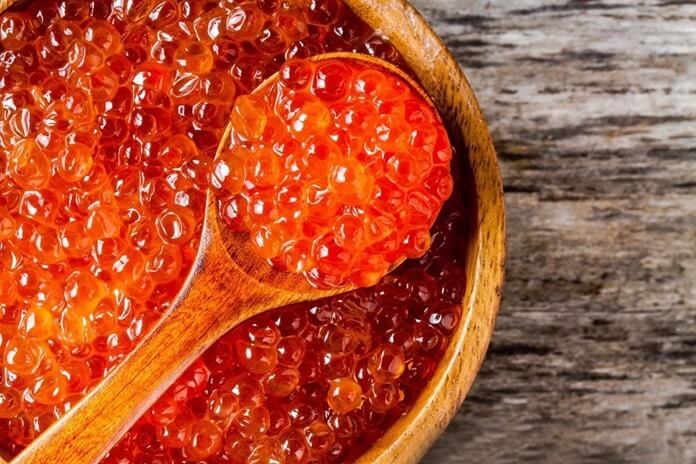 This delicacy is a real treasure trove of useful substances. It is rich in iodine, contains phosphorus, magnesium, iron, vitamin D, B vitamins, calcium and potassium. However, all these natural riches are unavailable if you buy a fake made from seaweed and gelatin.
This delicacy is a real treasure trove of useful substances. It is rich in iodine, contains phosphorus, magnesium, iron, vitamin D, B vitamins, calcium and potassium. However, all these natural riches are unavailable if you buy a fake made from seaweed and gelatin.
How to recognize a fake:
- When buying, pay attention to the composition, it should not contain gelatin, eggs, oils and milk. But there should be the name of the fish from which the caviar was obtained, salt and a couple of preservatives. For example, E400 (aka glycerin) and E200 (so that bacteria do not "start" in the caviar).
- At home, the easiest way to recognize a fake is to throw a couple of eggs into boiling water. If the eggs have lost their shape and started to dissolve, then you are not looking at real caviar. An egg from a real fish will not change shape, and the protein in it will curdle.
9. Sour cream
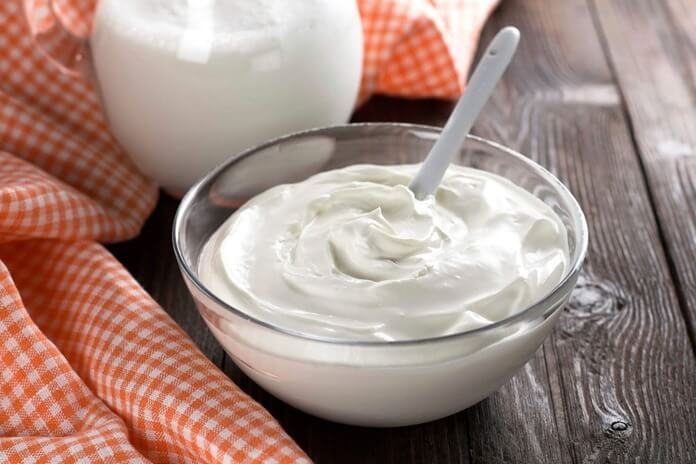 Beautiful bright jars of sour cream beckon you to take them off the shelf. However, some of these products have little in common with classic sour cream, made from cream and sourdough.
Beautiful bright jars of sour cream beckon you to take them off the shelf. However, some of these products have little in common with classic sour cream, made from cream and sourdough.
They contain vegetable fat instead of animal fat, and soy protein instead of milk protein.
How to recognize a fake:
- To check the naturalness of sour cream, you need to dissolve a small amount of it in boiling water. The fake will precipitate, the natural product will completely dissolve.
- If possible, try to buy sour cream from a local producer, as it is not economically feasible for them to produce a counterfeit product intended for local consumers.
8. Honey
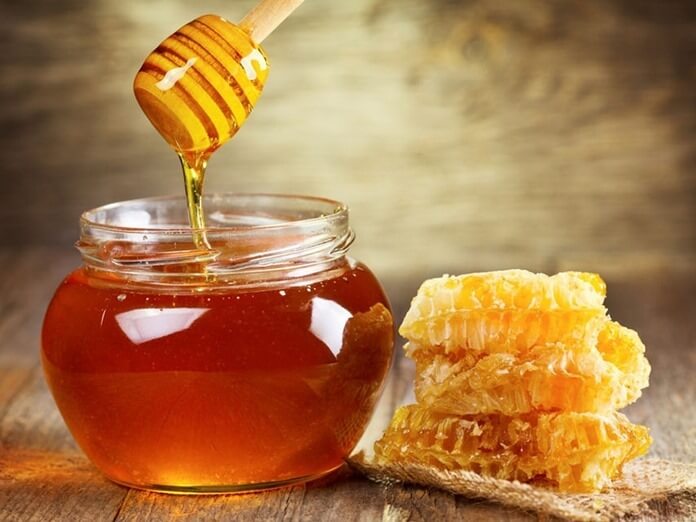 This is one of the most popular counterfeit food products not only on the Russian but also on the world market. Moreover, you can buy "linden honey" not only in a store but also at a rural fair.
This is one of the most popular counterfeit food products not only on the Russian but also on the world market. Moreover, you can buy "linden honey" not only in a store but also at a rural fair.
They add water, starch, sugar syrup, sell old and several times remelted honey, deprived of any nutritional value. And these are far from the only, but only the most common ways of counterfeiting honey.
How to recognize a fake:
- Good honey should not have foam, and its taste should not be sour (a sign of an unripe or spoiled product).
- Real honey has a rich smell, and the more syrup it contains, the weaker the smell.
- To determine the naturalness of thickened honey, rub a drop of it between your fingers. Feel the roughness and grains? This is sugar processed by bees. If the sensation is as if you are rubbing fat, you have real honey in front of you.
7. Shrimp
 When we buy frozen shrimp, we also buy frozen water. After all, these crustaceans are frozen immediately after catching. And one “shrimp kilogram” can contain from 10 to 40 percent ice.
When we buy frozen shrimp, we also buy frozen water. After all, these crustaceans are frozen immediately after catching. And one “shrimp kilogram” can contain from 10 to 40 percent ice.
The shrimp packaging indicates their caliber, i.e. the number of shrimp per kilogram. For example, 100/200 (i.e. there are 100 to 200 shrimp in one kilogram). But this is only true if the shrimp are not peeled. But if the shrimp is peeled or headless, the numbers indicate how many shrimp are contained in 1 pound (0.45 kg).
Another problem with shrimp is that when bred in coastal areas, they are usually pumped with antibiotics (most often chloramphenicol). This makes these crustaceans less likely to get sick.
How to recognize a fake:
- It is better not to take peeled shrimp, as they may be colored fish fillets.
- Buy only Atlantic shrimp, they contain the least amount of antibiotics.
- If the bag of small shrimp is heavy, there will most likely be ice under their shells.
- If it's not real shrimp but an imitation, it will usually say so on the label, so read the product description carefully.
6. Saffron
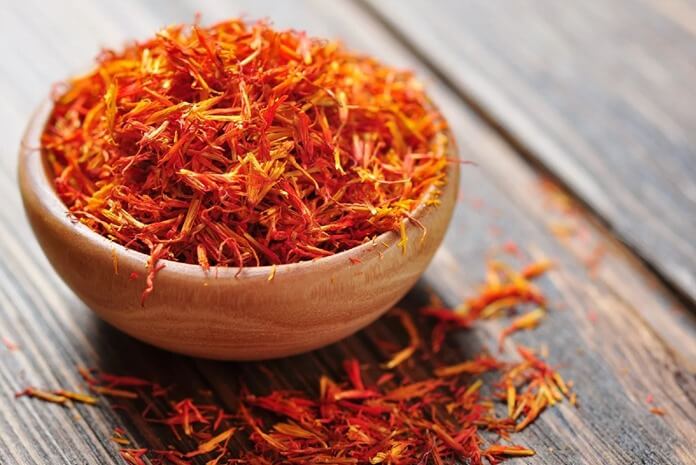 One of the most popular and expensive spices in the world, it gives dishes a beautiful color and aroma. It also has a preservative effect, and food prepared with the addition of saffron can be stored for several days.
One of the most popular and expensive spices in the world, it gives dishes a beautiful color and aroma. It also has a preservative effect, and food prepared with the addition of saffron can be stored for several days.
However, the cost of real saffron seasoning is very high. And this is not surprising, because it takes 200 thousand crocus flowers to make one kilogram of spice.
How to recognize a fake:
- Real saffron colors the water a rich red-orange color. Substitutes (turmeric and safflower) color it yellow.
- 90% saffron is produced in Iran, and it is also grown on an industrial scale in India and Spain. Therefore, when buying saffron, pay attention to the country of origin.
- If possible, smell the offered spice. Real saffron has a very rich smell, with a slight bitterness.
- Saffron is expensive, 1 gram will cost 400 rubles and up.
- It is advisable to buy saffron in the form of threads, they are dark orange in color, thinned on one side and slightly flattened on the other. But they do not have any curvatures or fringes.
5. Sausage and hot dogs
 The products so beloved by Russians are also the favorites of dishonest producers. Not enough meat? No problem! But there is a lot of starch!
The products so beloved by Russians are also the favorites of dishonest producers. Not enough meat? No problem! But there is a lot of starch!
And instead of pork and beef they put cheaper meat - chicken. And they don't spoil you with that either, and sausages that have the word "Chicken" in their name can actually contain no more than 10% of chicken meat.
How to recognize a fake:
- The further an ingredient (the same chicken meat) is from the beginning of the composition, the less of it there is.
- The shorter the composition, the better. Ideally, it should contain: meat, salt, water and spices. The more ingredients in the composition, the less meat in the sausage and hot dogs.
- The stronger the smell of the sausage, the worse it is. Aromatic seasonings are usually used to try to mask spoiled products or sausages with a lot of soy.
- The surface of a good sausage should be smooth, without a watery base, and the pieces of fat should be the same size.
4. Bread
 Fluffy bread with a fragrant crust and snow-white crumb is a joy for the eyes of buyers and number 1 in any food rating. However, the virgin whiteness of the "inner world" of bread can be a consequence of the use of so-called "improvers" (urea, sodium pyrosulfite, calcium peroxide, etc.), which are used to bleach flour.
Fluffy bread with a fragrant crust and snow-white crumb is a joy for the eyes of buyers and number 1 in any food rating. However, the virgin whiteness of the "inner world" of bread can be a consequence of the use of so-called "improvers" (urea, sodium pyrosulfite, calcium peroxide, etc.), which are used to bleach flour.
And even if you buy black bread, you can run into a fake. Instead of natural bread, you can get bread dyed with synthetic dyes.
And finally, instead of premium flour, unscrupulous manufacturers use grade 1 flour. Here, unfortunately, it is possible to identify counterfeit goods only with the help of a laboratory examination.
How to recognize a fake:
- Natural bread is stored for no more than 24 hours without packaging and 72 hours in packaging. If the inscription on the packaging promises longer storage, then preservatives were used.
- High-quality bread will quickly regain its shape when you press lightly on its surface. If an indentation remains, the bread is underbaked and the crumb is too sticky.
- An overly sweet and unnatural aroma of black bread indicates the presence of a dye (for example, caramel).
- Artificially colored bread containing dyes such as cocoa and carmine has a very dark and uniform brown color. In real black bread, the flour fibers are unevenly distributed, and the color is also uneven.
3. Smoked fish
 Tasty, aromatic fish is an irreplaceable addition to beer, and is good on its own. Do you know why smoked fish sometimes has a special aroma? From a flavoring agent called "liquid smoke." It can cause an allergic reaction, and in some countries, artificial "liquid smoke" is banned as a carcinogen.
Tasty, aromatic fish is an irreplaceable addition to beer, and is good on its own. Do you know why smoked fish sometimes has a special aroma? From a flavoring agent called "liquid smoke." It can cause an allergic reaction, and in some countries, artificial "liquid smoke" is banned as a carcinogen.
How to recognize a fake:
- Fish that has been treated with "liquid smoke" has a very strong smoked smell.
- If the fish is smoked according to all the rules, its meat has a yellowish tint, and fat (of the same tint) is located in the stomach area.
- The cut fish, smoked with liquid smoke, has the color of a regular herring, and almost no fat is released.
- Therefore, if you buy smoked fish, do not be shy and ask the seller to cut it.
2. Olive oil
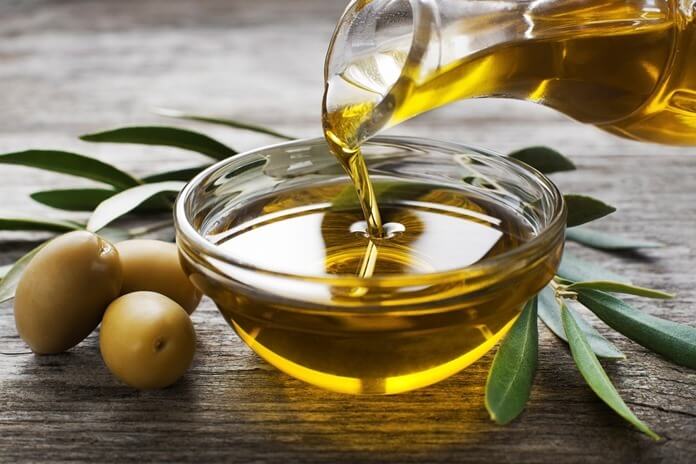 For the Italian mafia, the olive oil counterfeiting business is a real gold mine. As early as 2011, Italian investigators reported that about 80% of olive oil shipped from Italy was counterfeited or misdeclared.
For the Italian mafia, the olive oil counterfeiting business is a real gold mine. As early as 2011, Italian investigators reported that about 80% of olive oil shipped from Italy was counterfeited or misdeclared.
So if you buy “real Italian olive oil,” be prepared for the fact that it may turn out to be a low-grade fake mixed with the cheapest vegetable oil imported from Tunisia, Greece, and Morocco.
How to recognize a fake:
- Check the composition, it should contain only olive oil (Natural, 100% Olive Oil). If there are words Mix, Polivio, Estella - it is a mixture, which may contain only 1% olive oil.
- It is good if the label contains the word DOP. This means that the entire cycle of oil production, including its bottling, was carried out in one controlled region.
- High-quality olive oil will thicken noticeably when placed in the refrigerator, and flakes and sediment will appear at the bottom. At room temperature, the oil will return to its normal state.
1. Bottled natural water
 The top 10 most counterfeited products are headed by water. The percentage of counterfeit bottled water on average ranges from 25 to 30%. And in some countries it reaches 80%.
The top 10 most counterfeited products are headed by water. The percentage of counterfeit bottled water on average ranges from 25 to 30%. And in some countries it reaches 80%.
Chemezov suggested solving this problem by labeling water. In the meantime, we will have to try to distinguish good bottled water from bad on our own.
How to recognize a fake:
- The label must indicate the artesian well number, as well as the bottling date, expiration date, degree of mineralization and hardness, composition of the water and its source (well or water supply).
- There are two categories of bottled water - the first and the highest. The first includes ordinary water, passed through an industrial filter. Only participants who meet the requirements for artesian and spring water are admitted to the highest league.
- There should be no impurities or sediments in the water.














Оставить Комментарий